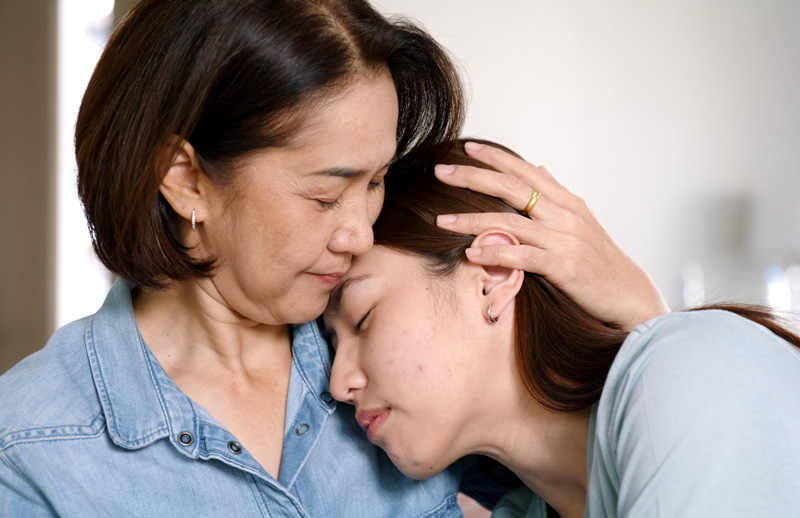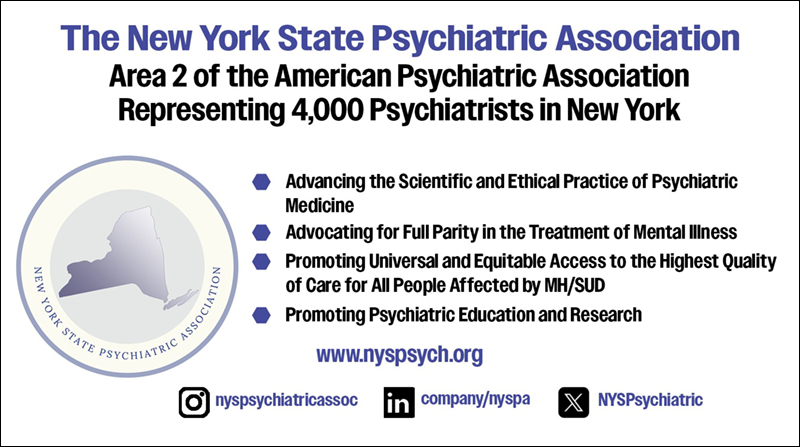We are all painfully aware of the children’s mental health crisis (Office of the Surgeon General, 2021). It has affected our children, adolescents, young adults, and their family members. It also impacts those of us who interact with children through our work: the mental health professionals, of which there are not enough, the pediatricians, many of whom are now developing greater expertise to assess and treat mild to moderate mental health conditions, and the teachers, who spend their days with children and may feel ill-equipped to address all of their social and emotional needs.

There is not a quick fix to solving this crisis and it will take a multi-pronged approach. I direct a Division of Child and Adolescent Psychiatry at an Academic Medical Center. I am fortunate to work in an environment with teams that provide children and adolescents with outstanding evidence-based care. Unfortunately, there are not enough of us to serve all the children that need help in our community. In response to that need, we work to expand our reach. We train the next generation of clinicians through psychiatric residencies and fellowships, nurse practitioner schools and residencies, and psychology and social work internships. We conduct research to better understand the mechanisms of disease. We have also developed models to collaborate with other professionals, such as pediatricians, who have learned that they can screen, assess, treat, and refer when needed. We are also expanding our school mental health partnerships by adding to our long-standing school program that provides specialty evaluations for children with complex needs. We will be adding programming to provide a tiered system of care, which will provide school staff with education about mental health and wellbeing to enhance the school environment and targeted interventions (consultation, assessment, brief treatment, and referral for students) for students with greater needs.
The Crisis challenges us to develop creative ways to increase access to youth mental health care. As we increase access, we must also ensure quality. Accordingly, there has been a move to use evidence-informed rating scales to support clinical decision-making. Rating scales are an efficient way to identify and track symptoms in a standard fashion, but they are not meant to be diagnostic or to replace a clinical interview. They can be used to screen and also support clinical decision-making and have been used to support measurement-based care (MBC), an evidence based clinical practice to improve the quality of mental healthcare quality. Symptoms are identified with a patient-reported outcome measure through routine screening or as part of a more in-depth assessment. The measure, or rating scale, is repeated throughout the course of treatment to inform clinical next steps. MBC has been implemented in primary care settings (Sarvet, 2020), is recommended as part of school mental health programming (Connors and Hoover, 2025) and can be used in varied psychotherapeutic settings to optimize child psychotherapy. Evidence on the efficacy of MBC is growing. While there is more data on MBC in adults, a meta-analysis showed that the impact on children and adolescents may be greater than that of adults (Rognstad et al., 2023). These rating scales can also be used as a tool for clinicians to facilitate communication and engagement with patients and families by sharing results and indicating progress and areas where improvement is needed.
Many of these rating scales are publicly available, and thus, they are easily accessible. Some examples include the Patient Health Questionnaire for Adolescents Modified for Teens (PHQ-A available at glad-pc.org), which can help screen for depression, Self-Report for Childhood Anxiety-Related Emotional Disorders (SCARED, Birmaher et al., 1999) for anxiety and the Swanson, Nolan, and Pelham (SNAP)-IV Rating Scale (Bussing et al., 2008) and the Vanderbilt Assessment Scale Vanderbilt Diagnostic Rating Scales (Wolraich et al., 2003) for ADHD. Rating scales such as these are available in the public domain and can be found online. See, for example, the AACAP Tool box and the collection of rating scales on the REACH Institute’s website. There is no “prescribed” method to deliver MBC, and the method may vary based on the setting. For examples of implementing MBC in school, see the SAMHSA report Advancing Measurement-Based Care in School Mental Health, or in psychotherapeutic practice, see the American Psychological Association’s Measurement-Based Care Practices Center. One can also use a feedback system (see, for example, psychiatry.org or the meta-analysis by Rognstad et al. 2023). Below are two case examples to illustrate the use of MBC.
Case Example 1
Ava is a 16-year-old tenth grader who presents to her pediatric practice for her annual physical. When she checks in, she is given the Pediatric Symptom Checklist (PSC-17, Gardner et al., 1999), a generalized psychosocial screening which is available in parent and youth versions and comes in multiple languages. She also receives the PHQ-A. These are now given to all adolescents at well visits in this practice. The medical assistant flags the PSC-17 and the PHQ-A as both indicate signs of depression. During interview, her mother reported that she has seemed more tired lately and is uncharacteristically having trouble getting up in the morning on time for school. When the pediatrician speaks to Ava alone, he hears that she has been feeling sad and overwhelmed since the start of the school year. At times, she wonders if she would be better off dead, but she has no intent to harm or kill herself. The pediatrician discusses further with Ava and her mom that these signs are consistent with depression and recommends that she start medication and psychotherapy. The family wants time to think and consider the recommendations, so the pediatrician schedules a follow-up appointment. At the next appointment, Ava’s PHQ-A score is even higher. She continues to report feeling depressed. The pediatrician shares this feedback with Ava and her mom. They agree to start medication and follow up with the referral for psychotherapy. At follow-up visits, Ava continues to complete the PHQ-A, and the pediatrician makes medication adjustments accordingly.
Case Example 2
Reggie is a 7-year-old boy who presents to a community mental health center referred by his school because he has been disrupting class. Prior to the first visit, his parents received a link to complete a number of rating scales online, including the SNAP-IV. Prior to the first appointment, the therapist noted that Reggie’s SNAP-IV scores are consistent with ADHD but that there is no evidence of anxiety, depression, or conduct-disordered behavior. The parent reports that he is a handful at home; he is sweet and cheerful but has trouble paying attention and following directions. The therapist suspects that Reggie has ADHD, gets consent to communicate with the school, and asks his mom to give his teacher at Vanderbilt. At his next visit, he meets with the child and adolescent psychiatrist. The psychiatrist reviews the rating scales from the parents, teachers, and the assessment from the therapist. After her comprehensive clinical assessment, she diagnoses Reggie with ADHD, prescribes a stimulant medication, and refers the parents to the clinic’s parent management training group. At his next visit, his father reports that his symptoms have greatly improved. However, the rating scales from both the parent and teacher report residual symptoms. The child and adolescent psychiatrist increases his medication dose. Once Reggie is on a stable regimen, the psychiatrist speaks with Reggie’s parents and finds out that Reggie’s pediatrician has agreed to treat Reggie’s ADHD. The psychiatrist communicates with the pediatrician and discharges Reggie from the clinic. If we are responsive to children’s remaining symptoms, they may recover faster and need less frequent treatment or even be ready to “graduate” from treatment, thus making way for other clients.
Implementing MBC presents challenges. For example, it is important to identify who will distribute the rating scales and ensure that they are returned so that the clinician can review them in a timely fashion, preferably during the clinical visit. In addition, findings from the rating scales may not be consistent with the clinical interview. In those cases, the clinician should use their clinical judgment of how to weigh the conflicting information to determine the best next steps. Research has demonstrated that feeling more positive and more skillful about MBC (i.e., higher self-efficacy) correlates with higher use of MBC (Jensen-Doss et al., 2025). This argues for the need for training and ongoing supervision to help clinicians use MBC.
Measurement-based care can be an effective way to support clinical decision-making, improve quality, and engage families in their clinical decision-making. It may be one piece of the puzzle in tackling the children’s mental health crisis.
Cathryn A. Galanter, MD, is a Professor of Psychiatry and Division Director of Child and Adolescent Psychiatry in the Department of Psychiatry and Behavioral Health at Stony Brook University. She is a nationally recognized expert on child and adolescent psychiatry and a clinical and academic leader with a background in transforming educational and research programs, mentoring and supervising physicians and clinicians, and overseeing curriculum design. Her clinical and research interests include attention deficit hyperactivity and bipolar disorders, collaboration with pediatrics and schools, assessment and measurement-based care, and clinical decision-making.
References
American Psychological Association Measurement-Based Care Practice Center https://www.apaservices.org/practice/measurement-based-care accessed 03/18/2025
Birmaher B, Brent DA, Chiappetta L, Bridge J, Monga S, Baugher M. Psychometric properties of the Screen for Child Anxiety Related Emotional Disorders (SCARED): a replication study. J Am Acad Child Adolesc Psychiatry. 1999;38:1230–6. http://www.psychiatry.pitt.edu/sites/default/files/Documents/assessments/SCARED%20Child.pdf. Accessed 03/18/2025
Bussing R, Fernandez M, Harwood M, Hou W, Garvan CW, Eyberg SM, et al. Parent and teacher SNAP-IV ratings of attention deficit hyperactivity disorder symptoms: psychometric properties and normative ratings from a school district sample. Assessment.2008;15:317–28 www.myadhd.com/snap-iv-6160-18sampl.html accessed 03/18/2025
Chorpita, B. F., Daleiden, E. L., Park, A. L., Ward, A. M., Levy, M. C., Cromley, T., Chiu, A. W., Letamendi, A. M., Tsai, K. H., & Krull, J. L. (2017). Child STEPs in California: A cluster randomized effectiveness trial comparing modular treatment with community implemented treatment for youth with anxiety, depression, conduct problems, or traumatic stress. Journal of Consulting and Clinical Psychology, 85(1), 13–25.
Connors, E. H. & Hoover, S. (2025). Advancing measurement-based care in school mental health. Publication No. PEP24-01-030. Rockville, MD: Substance Abuse and Mental Health Advancing Measurement-Based Care in School Mental Health Accessed 03/18/2025
Gardner W, Murphy M, Childs G, et al. The PSC-17: a brief pediatric symptom checklist with psychosocial problem subscales. a report from PROS and ASPN. Ambul Child Health. 1999;5:225–36. www.massgeneral.org/psychiatry/treatments-and-services/pediatric-symptom-checklist Accessed 03/18/2025
Jensen-Doss A, Casline E, Woodard GS, Phillips DA, Lane E, Palafu T, Waye C, Ramirez V, Cheron DM, Okamura K. Provider Use of, Attitudes Towards, and Self-efficacy with Key Measurement-based Care Practices in Youth Mental Health Treatment: A Multi-site Examination. Adm Policy Ment Health. 2025 Jan;52(1):146-158. doi: 10.1007/s10488-024-01354-6. Epub 2024 Feb 9. PMID: 38334881.
Office of the Surgeon General (OSG). Protecting Youth Mental Health: The U.S. Surgeon General’s Advisory [Internet]. Washington (DC): US Department of Health and Human Services; 2021. PMID: 34982518.
Patient Health Questionnaire 9: Modified for Teens. www.glad-pc.org. Accessed 03/18/2025.
Rognstad, K., Wentzel-Larsen, T., Neumer, S.-P., & Kjøbli, J. (2023). A systematic review and meta-analysis of measurement feedback systems in treatment for common mental health disorders. Administration and Policy in Mental Health and Mental Health Services Research, 50(2), 269–282
Sarvet B. Measurement-Based Care in the Pediatric Primary Care Setting. Child Adolesc Psychiatr Clin N Am. 2020 Oct;29(4):691-702. doi: 10.1016/j.chc.2020.06.009. Epub 2020 Jul 22. PMID: 32891370.
Wolraich ML, Lambert W, Doffing MA, Bickman L, Simmons T, Worley K. Psychometric properties of the Vanderbilt ADHD diagnostic parent rating scale in a referred population. J Pediatr Psychol. 2003;28:559–68 https://thereachinstitute.org/wp-content/uploads/2021/06/Vanderbilt_Parent_Rating_Scale.pdf accessed March 18, 2025
www.psychiatry.org/psychiatrists/research/registry accessed 03/18/2025








